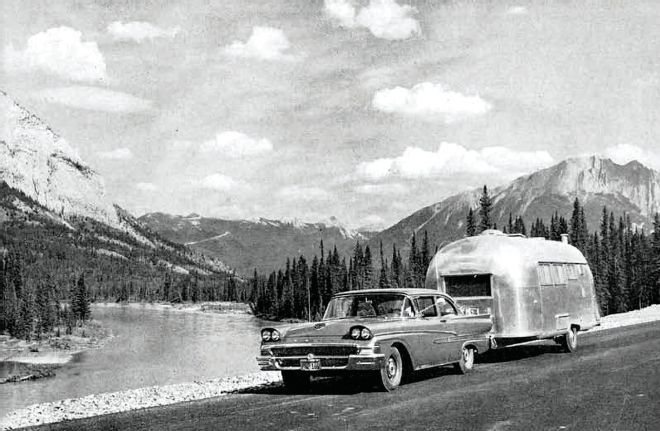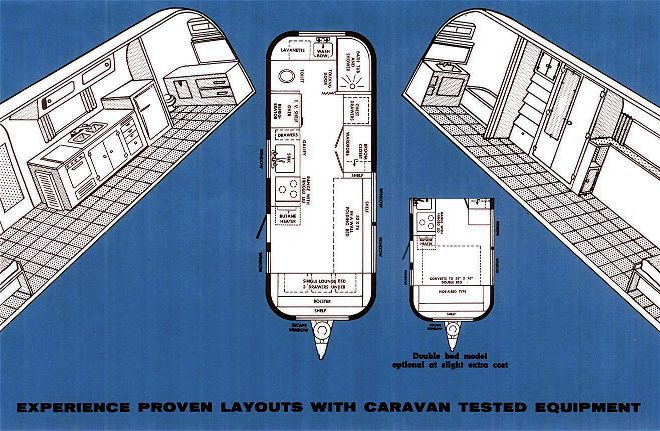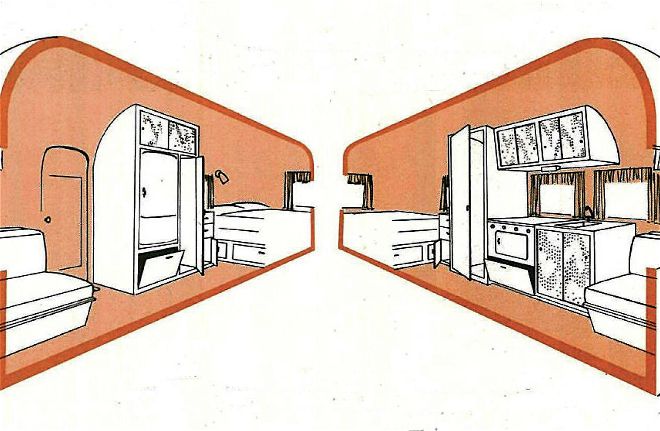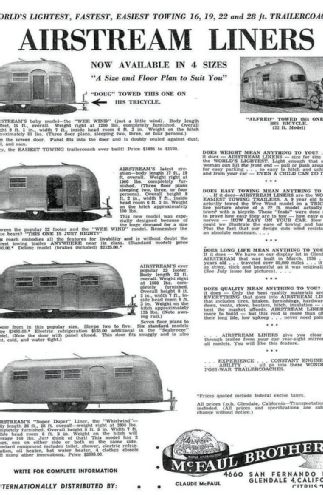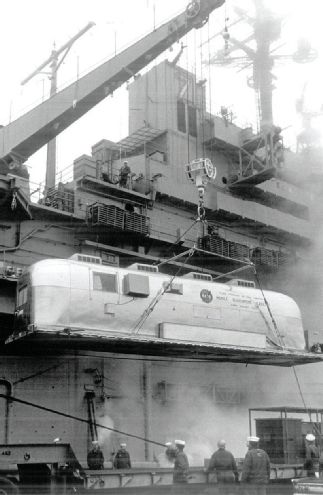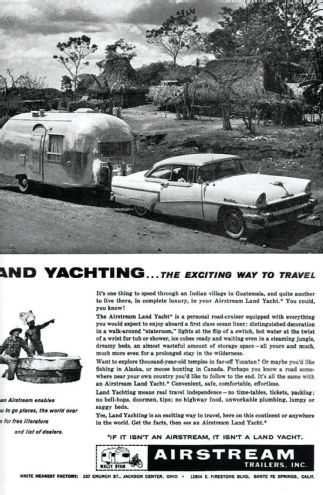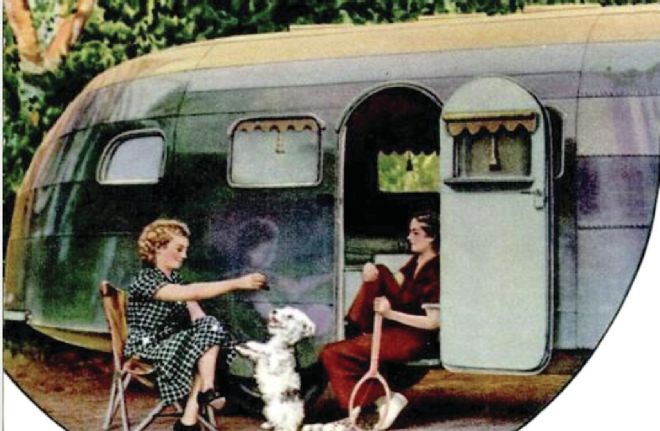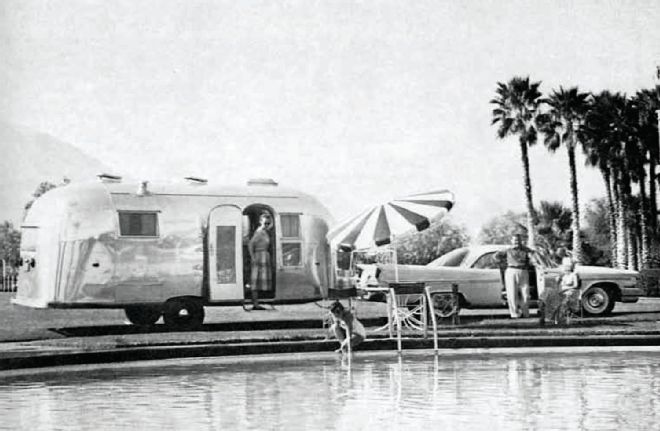You can’t mistake an icon. A sleek sliver of gleaming aluminum slicing through the wind, reflecting an urgent wanderlust on all who see it and dripping with a design so modern, it was a classic even when brand new. In the realm of recreational vehicles, the Airstream is the most recognizable brand in the world—akin to Volkswagen and Land Rovers. That’s due to the long-ago efforts of one man: Wallace “Wally” Byam, publisher, marketer, advertising man, and avid traveler. He not only founded a world-famous trailer company and great American symbol of chic, Byam jump started a whole way of life for thousands of people.
After World War I (as with most wars), young men used to activity, commotion, and movement, returned home restless and looking for excitement. Army surplus provided the material, the rising popularity of the automobile and National Parks provided the means, and families’ spirit of adventure provided the momentum. Lacking hotels (and motels had yet to be invented), people made do with what was available. They slept in tents or cars or built their own home away from home, as factory-built campers and trailers were rare and expensive.
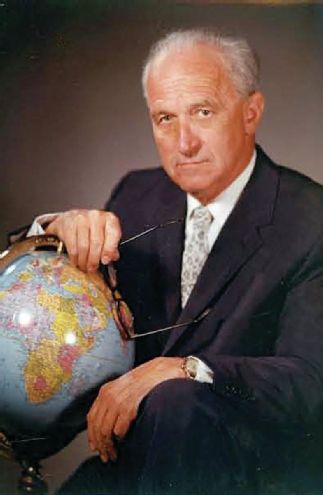
| Airstream Founder, Wallace Merle “Wally” Byam
Byam was no different than those early adventurers. Born on the Fourth of July, 1896, in Baker City, Oregon, he was always on the go and learned how to survive early on. Abandoned by his father when he was a small boy, Byam was taken in by his grandfather with whom he travelled the American West on his grandfather’s mule team. Byam’s love of the outdoors, seclusion, and the ability to go and do as he pleased became a well-entrenched part of his personality by the time he became a teenager and cared for a flock of sheep his grandfather had purchased. The nomadic experiences of living in a primitive mule-powered shepherd’s wagon for months at a time, far away from civilization, instilled a sense of independence and fortitude that would serve Byam well his entire life. At the age of 19, he wrote a series of affirmations that illustrate his ambition. One is especially prophetic: “I am a man of extremes. Either I will be a big boss, a rousing success, or a blank failure. In my heart, I know I will be a great big glorious success, and that my name will go down in history.”
History would take a few more years to find him. In the meantime, Byam explored the world with the Merchant Marines, settling in Los Angeles after earning a dual degree in journalism and architectural engineering from Stanford. Immediately out of college, no one job seemed to suit him. He flitted down more than a few career paths, eventually setting a course in the publishing world, first as a copywriter for the
Los Angeles Times and finally, branching out by creating his own publishing company.
People first caught wind of Byam in the pages of a do-it-yourself magazine—one of five magazines he published in the late 1920s. In its pages was an article on how to build an inexpensive camping trailer. However, there were so many complaints from his readers, claiming the plans were flawed, Byam tried them out for himself, and agreed. The myth that he published a story in
Popular Mechanics called “How to Build a Trailer for 100 Dollars” is exactly that. The publication in 1927 to 30, was awash with DIY trailer plans from companies like Silvertop Trailers, Fold-A-Way Trailer Co., and Jim Dandy Trailers. He did, though, build a trailer based on an old Model T chassis and offered those plans for sale in that very magazine, making a tidy sum that pushed him into the trailer business. Not only were his plans popular and easy to follow, people wrote to him asking that he sell them completed trailers.
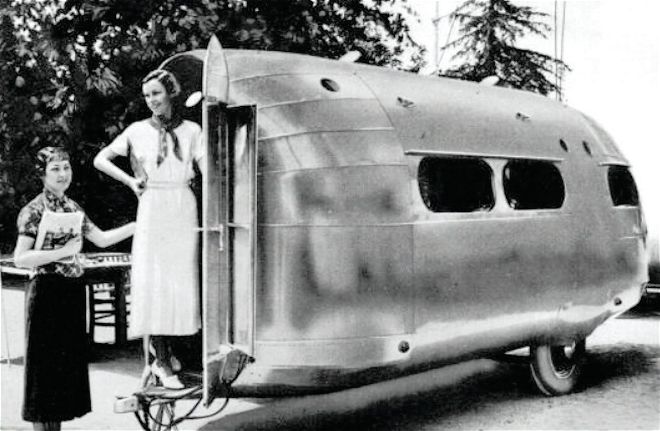
| The inspiration for Airstream’s design, this is an early 1935 Bowlus, most likely a Roadchief.
In his Los Angeles backyard, the ever-energetic and creative Byam started building trailers. The requests arrived so swiftly, he abandoned the magazine business and started manufacturing trailers full time, offering four different models. The Airstream Company was born in 1932, one of 48 trailer manufacturing companies in the United States at the time. Five years later, there would be over 400—and of those, Airstream is the only one still in business.
What made his 12-foot Airlite, 14-foot Torpedo Junior and 16-foot Silver Cloud different was the design and the marketing. Byam’s design called for the floor to be lower than the wheels and axles, which created enough headroom to stand inside, as well as a lower door for easier entry. He used Masonite and lightweight plywood. While no other trailer in the early 1930s had running water, Byam’s popular Torpedo model offered a tank that could be pressurized with a hand pump. He was a good marketer, always knowing what to say, how to say it, and to whom. The 18-foot Mobile Home was described as “a bungalow on wheels built exclusively to live in.”
As the Great Depression worsened, sales of both Airstream plans and completed trailers began to wane, and Byam sought additional employment as a sale rep for the Bowlus-Teller Company, maker of the airplane-inspired Road Chief trailer among others.
Enter William H. Bowlus, who had already made a significant name for himself in the airplane industry. He was building gliders by 1910 (he had glider license Number Two, signed by Orville Wright), and built aircraft during World War I in the Army Air Service. In 1927, Bowlus was the Ryan Airlines shop manager who oversaw the construction of the
Spirit of St. Louis aircraft Charles Lindbergh flew from New York to Paris. His name is one of several written on the inside of the plane’s nosecone, which was given to Bowlus by Lindberg after the flight. (It was donated to the Smithsonian by Ruth Bowlus in 1999.) He held the American glider endurance record in the Bowlus SP-1 in 1929 (over an hour) and taught Lindbergh how to pilot a glider in 1930 over the cliffs at Point Loma, California.
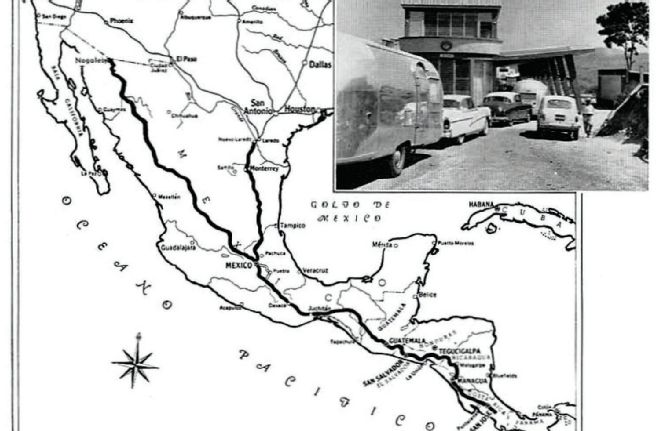
| Map of the Central American trip made in 1958.
During test flights of his gliders, Bowlus usually spent nights in tents. Around 1933, he crafted the idea of constructing a trailer to stay in and an idea was born. With friend Jacob Teller’s financial backing, Bowlus started building aerodynamic-inspired travel trailers in 1934 under a company called Bowlus-Teller Manufacturing in San Fernando, California. Bowlus’s trailers were innovative in their use of riveted lightweight aluminum alloy, which was both rust and shrink proof. The Road Chief was the first trailer to feature a
monocoque design, meaning that the trailer body and chassis comprised a single integral unit. For the next two years, the company produced approximately 140 trailers, of which around 20 still exist. Though Bowlus was a huge proponent of the virtues of streamlining—he even claimed towing the streamlined Road Chief trailer actually increased a car’s mileage—he was not much of a promoter. Instead, he enlisted Byam to help with marketing and sales, but even that wasn’t enough.
With prices ranging from $750 for the Papoose model all the way up to $7,500 for the Motor Chief, it was beyond the means of most Americans. In 1936, Bowlus declared bankruptcy. Byam bought some of the Bowlus equipment and convinced several key employees to come work for him. After the bankruptcy sale and before the end of 1936, the Airstream Clipper came on the market, which was virtually identical to the Bowlus Road Chief.
Bowlus may have invented the aluminum aerodynamic trailer, but Byam made it work. But he would have to wait yet again for success. By the end of the 1930s, war was on the horizon and very quickly, aluminum was rationed. The last thing people felt able to do was purchase a travel trailer. The company was mothballed, and Byam took a job with Lockheed building airplanes for the war effort. In 1946, he partnered with Curtis Wright Industries and designed a trailer virtually identical to the Road Chief/Clipper trailer of 1935/36. The relationship lasted less than a year. In 1947, Byam resumed Airstream production.
During the economic boom of the 1950s the Airstream become an icon, and Byam’s dream of success flourished greater than even he might have imagined. The Airstream combined wanderlust and domestic bliss seamlessly into a beautiful streamlined package, which fascinated newly prosperous Americans. The demand seemed limitless. Over the next 20 years, the line of Airstreams was constantly refined. The company gained a reputation as building the best on the road, and Byam personally made sure it was so.
Early on, Byam realized people were buying travel trailers and letting them sit unused for most of the year. In 1951, he gathered a group of friends for a publicity trip to Ensenada, Mexico. It was the first of many caravans over the next few years.
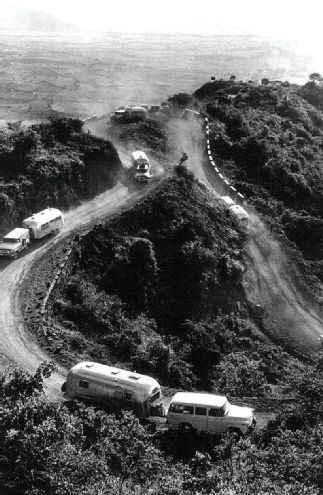
| Airstream Off Roading
Open to everyone at first, the caravans were so popular Byam eventually had to limit the participation to Airstream owners. These caravans were not vacations for him, but opportunities for field research, problem solving, customer relations, and publicity. His caravans travelled through South America, the near east, Asia, Europe, and Africa. The rigorous, and often harsh, road conditions and the direct feedback from fellow travelers allowed Byam to test and improve all aspects of the Airstream. He also wore his trademark blue beret for the first time during a Central American trip, which was picked up by fellow caravaners.
Byam was the most dedicated critic of Airstream trailers the company ever had. Hardly a day went by that the factory foreman didn’t receive a long letter of criticism and changes to be applied to the production line. Not even the smallest detail escaped Byam’s personal notice. Equipment suppliers were never surprised to receive middle-of-the-night phone calls from all parts of the world with Wally on the other end of the line asking for improvements.
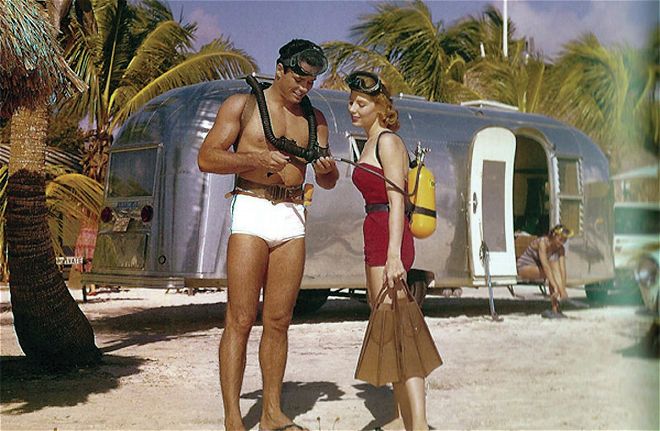
| Airstream Ad
He was always looking for more efficient gas stoves, better constructed retracting steps, more comfortable chairs, anything to make his Airstreams better, more practical, and more enticing to prospective buyers. When he couldn’t find it, he asked a company to make it, and if a company couldn’t make it, he made it himself.
In 1959, Byam led a group of 41 Airstreams on a caravan from Capetown to Cairo. On this arduous 18-month trip, he began writing the book,
Trailer Travel—Here and Abroad, his second book about the RV lifestyle. Byam was 63 and in good health, but during the final months of the African caravan, his eyesight began to fail him.
Back in the United States, he went to see an ophthalmologist, who sent him to a neurologist. The diagnosis was a brain tumor. He underwent several unsuccessful operations and then was confined to a hospital bed in his Los Angeles home. While in the hospital, Wally was confronted by one of his caravan members, who asked: “Wally, what are we going to do while you are in the hospital?” What he said next has become his legacy, an expanded motif of the Airstream ideals and an inspiration to all those who believe in the freedom of RV travelling: “Don’t stop. Keep right on going. Hitch up your trailer and go to Canada or down to Old Mexico. Head for Europe, if you can afford it, or go to the Mardi Gras. Go someplace you’ve heard about, where you can fish or hunt or collect rocks or just look up at the sky. Find out what’s at the end of some country road. Go see what’s over the next hill, and the one after that, and the one after that.”
Wally Byam passed away on July 22, 1962, but his Airstream trailers—icons of design, function, and style—keep on rolling.
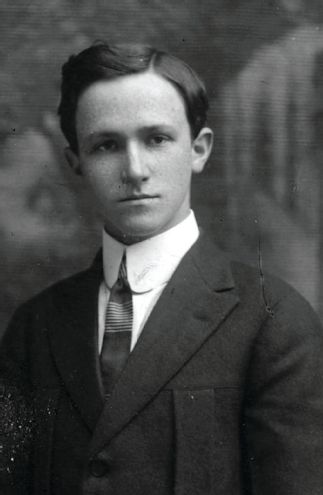
| A young Wally Byam.
Wally Byam’s Creed
“In the heart of these words is an entire life’s dream. To those of you who find in the promise of these words your promise, I bequeath this creed… my dream belongs to you.”
To place the great wide world at your doorstep for you who yearn to travel with all the comforts of home.
To provide a more satisfying, meaningful way of travel that offers complete travel independence, wherever and whenever you choose to go or stay.
To keep alive and make real an enduring promise of high adventure and faraway lands...of rediscovering old places and new interests.
To open a whole world of new experiences…a new dimension in enjoyment where travel adventure and good fellowship are your constant companions.
To encourage clubs and rallies that provide an endless source of friendships, travel fun and personal expressions.
To lead caravans wherever the four winds blow…over twinkling boulevards, across trackless deserts…to the traveled and untraveled corners of the earth.
To play some part in promoting international goodwill and understanding among the peoples of the world through person-to-person contact.
To strive endlessly to stir the venturesome spirit that moves you to follow a rainbow to its end…and thus make your travel dreams come true.
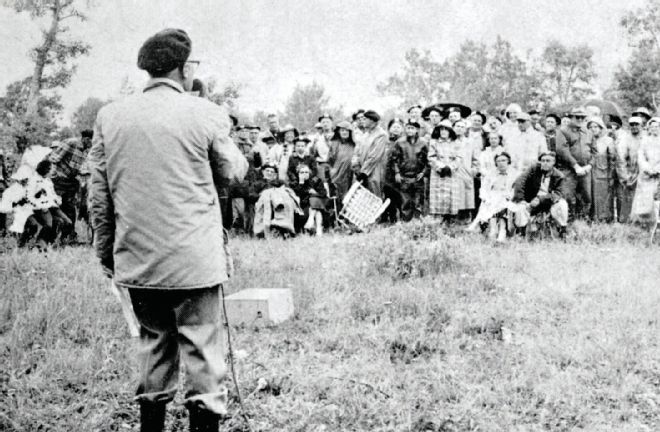
| Airstream Rear View
Popular Airstream Names
The names bring to mind images of effortless travel. Over the last 80 years of Airstream history, the trailers’ model names corresponded with their size. One would expect a trailer named “Ambassador” to be large (and it is at 28 feet), while it stands to reason that the “Bambi” would be small (at 14 feet). After 1968, though, the smaller trailers fell out of favor, and the model names no longer corresponded to size. Caravel had five different sizes and floor plans.
Ambassador
Bambi
Bambi II
Bubble
Caravanner
Caravel
Caravelle
Clipper
Cruisette
Excella 500
Flying Cloud
Globetrotter
Overlander
Pacer
Safari
Sovereign
Tradewind
Wanderer
Wee Wind

| Airstream Group Photo
 | Airstream Founder, Wallace Merle “Wally” Byam
Byam was no different than those early adventurers. Born on the Fourth of July, 1896, in Baker City, Oregon, he was always on the go and learned how to survive early on. Abandoned by his father when he was a small boy, Byam was taken in by his grandfather with whom he travelled the American West on his grandfather’s mule team. Byam’s love of the outdoors, seclusion, and the ability to go and do as he pleased became a well-entrenched part of his personality by the time he became a teenager and cared for a flock of sheep his grandfather had purchased. The nomadic experiences of living in a primitive mule-powered shepherd’s wagon for months at a time, far away from civilization, instilled a sense of independence and fortitude that would serve Byam well his entire life. At the age of 19, he wrote a series of affirmations that illustrate his ambition. One is especially prophetic: “I am a man of extremes. Either I will be a big boss, a rousing success, or a blank failure. In my heart, I know I will be a great big glorious success, and that my name will go down in history.”
History would take a few more years to find him. In the meantime, Byam explored the world with the Merchant Marines, settling in Los Angeles after earning a dual degree in journalism and architectural engineering from Stanford. Immediately out of college, no one job seemed to suit him. He flitted down more than a few career paths, eventually setting a course in the publishing world, first as a copywriter for the Los Angeles Times and finally, branching out by creating his own publishing company.
People first caught wind of Byam in the pages of a do-it-yourself magazine—one of five magazines he published in the late 1920s. In its pages was an article on how to build an inexpensive camping trailer. However, there were so many complaints from his readers, claiming the plans were flawed, Byam tried them out for himself, and agreed. The myth that he published a story in Popular Mechanics called “How to Build a Trailer for 100 Dollars” is exactly that. The publication in 1927 to 30, was awash with DIY trailer plans from companies like Silvertop Trailers, Fold-A-Way Trailer Co., and Jim Dandy Trailers. He did, though, build a trailer based on an old Model T chassis and offered those plans for sale in that very magazine, making a tidy sum that pushed him into the trailer business. Not only were his plans popular and easy to follow, people wrote to him asking that he sell them completed trailers.
| Airstream Founder, Wallace Merle “Wally” Byam
Byam was no different than those early adventurers. Born on the Fourth of July, 1896, in Baker City, Oregon, he was always on the go and learned how to survive early on. Abandoned by his father when he was a small boy, Byam was taken in by his grandfather with whom he travelled the American West on his grandfather’s mule team. Byam’s love of the outdoors, seclusion, and the ability to go and do as he pleased became a well-entrenched part of his personality by the time he became a teenager and cared for a flock of sheep his grandfather had purchased. The nomadic experiences of living in a primitive mule-powered shepherd’s wagon for months at a time, far away from civilization, instilled a sense of independence and fortitude that would serve Byam well his entire life. At the age of 19, he wrote a series of affirmations that illustrate his ambition. One is especially prophetic: “I am a man of extremes. Either I will be a big boss, a rousing success, or a blank failure. In my heart, I know I will be a great big glorious success, and that my name will go down in history.”
History would take a few more years to find him. In the meantime, Byam explored the world with the Merchant Marines, settling in Los Angeles after earning a dual degree in journalism and architectural engineering from Stanford. Immediately out of college, no one job seemed to suit him. He flitted down more than a few career paths, eventually setting a course in the publishing world, first as a copywriter for the Los Angeles Times and finally, branching out by creating his own publishing company.
People first caught wind of Byam in the pages of a do-it-yourself magazine—one of five magazines he published in the late 1920s. In its pages was an article on how to build an inexpensive camping trailer. However, there were so many complaints from his readers, claiming the plans were flawed, Byam tried them out for himself, and agreed. The myth that he published a story in Popular Mechanics called “How to Build a Trailer for 100 Dollars” is exactly that. The publication in 1927 to 30, was awash with DIY trailer plans from companies like Silvertop Trailers, Fold-A-Way Trailer Co., and Jim Dandy Trailers. He did, though, build a trailer based on an old Model T chassis and offered those plans for sale in that very magazine, making a tidy sum that pushed him into the trailer business. Not only were his plans popular and easy to follow, people wrote to him asking that he sell them completed trailers.
 | The inspiration for Airstream’s design, this is an early 1935 Bowlus, most likely a Roadchief.
| The inspiration for Airstream’s design, this is an early 1935 Bowlus, most likely a Roadchief.
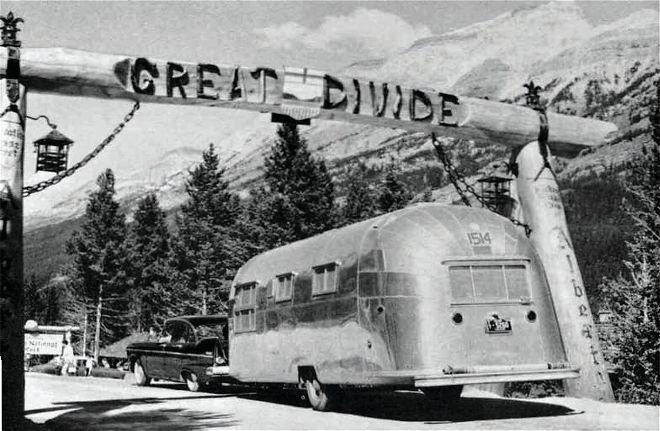
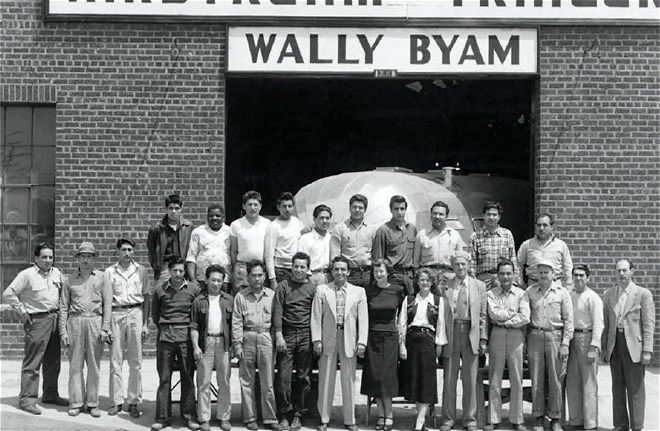
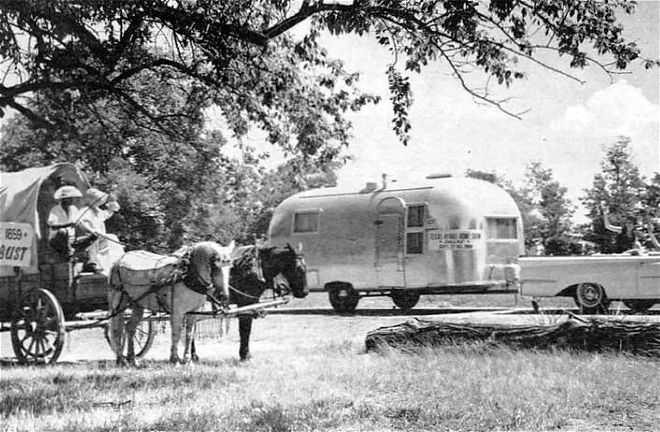
 | Map of the Central American trip made in 1958.
| Map of the Central American trip made in 1958.
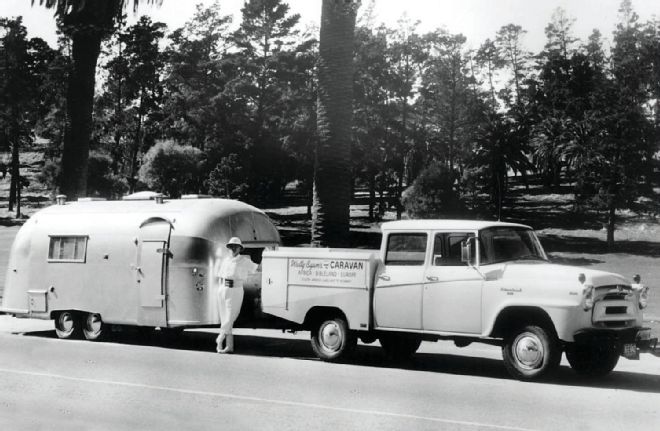
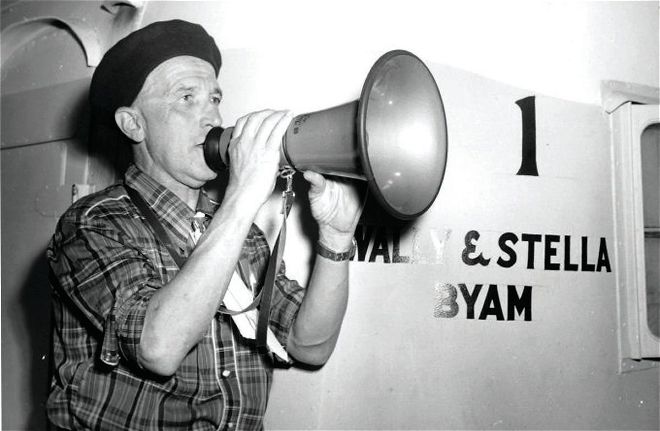
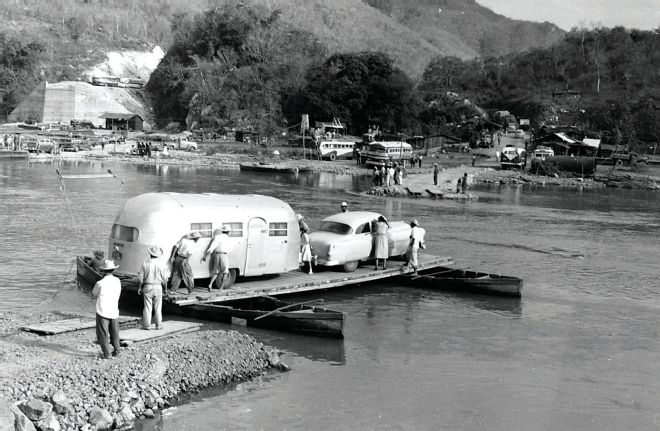
 | Airstream Off Roading
| Airstream Off Roading
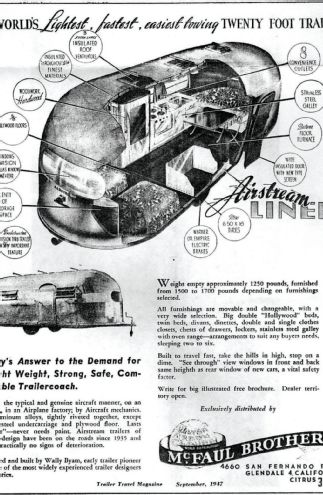
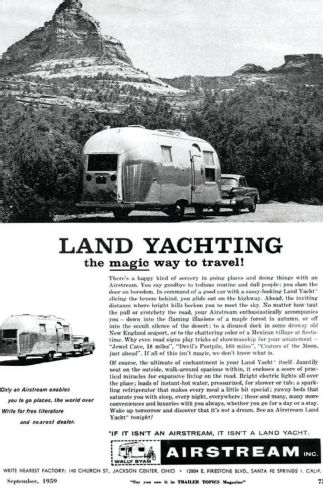
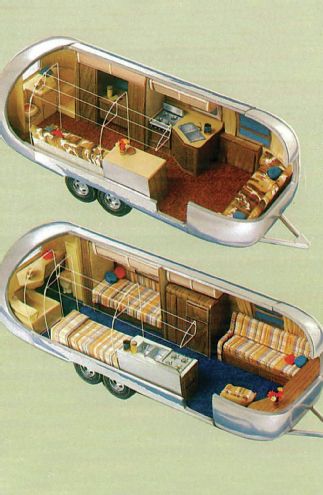
 | Airstream Ad
| Airstream Ad
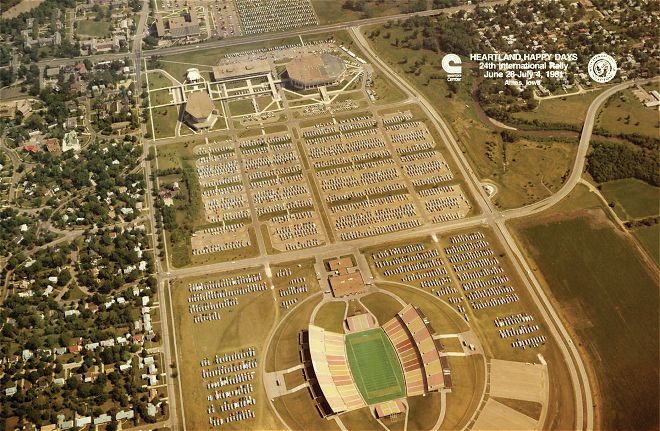
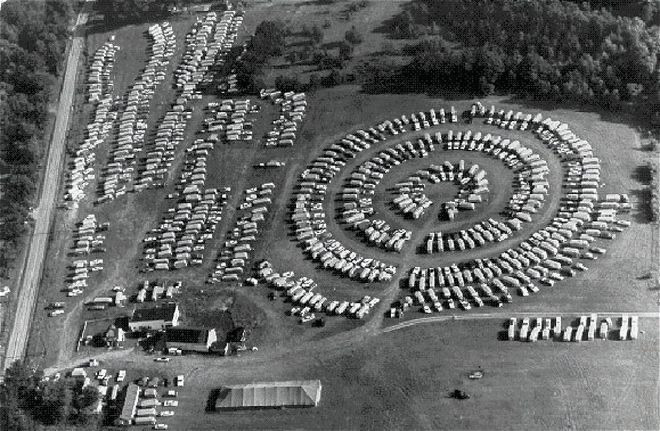
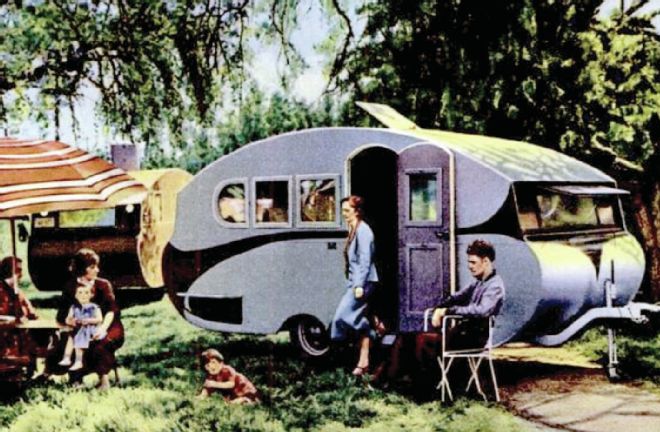
 | A young Wally Byam.
| A young Wally Byam.
 | Airstream Rear View
Popular Airstream Names
| Airstream Rear View
Popular Airstream Names | Airstream Group Photo
| Airstream Group Photo
